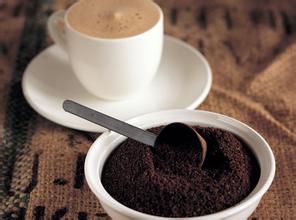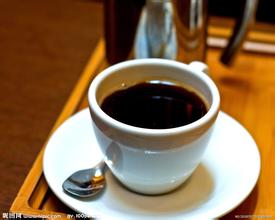Flavor and taste of coffee manor in Indonesia Kahayang Gan Manor
The classification will be more complicated. Some Arabica coffee beans are quite close to the native species, while others are quite similar to the Robusta species. Even if the coffee has the same name (named from the place of origin), as long as the cultivated varieties are different, the flavor is different from the leaf rust-resistant varieties found in the African Congo, teaching the Arabica species to be more resistant to the disease. People like to compare the robusta species to the Arabica species of coffee. In fact, the robusta species was originally a mutant of the Congolese species (scientific name Cofffea canephora), so it is the Congolese species that should be compared with the Arabica species. However, until today, the name of the Robusta species has been commonly used by the public, and it is regarded as the same species as the Congo species. West Africa is the origin of Liberian coffee, no matter whether it is high or low temperature, humid or dry. It has a strong adaptability, but it is not resistant to leaf rust and its flavor is worse than that of Arabica, so it is traded only in some West African countries (Libya, C ô te d'Ivoire, etc.). Or planted for research.
About 65% of the coffee in circulation in the world market is Arabica.
According to the statistics of the International Coffee Organization (ICO), excluding the domestic transactions of each coffee-producing country, about 65% of the coffee in circulation in the world market is Arabica and 35% is robusta. Arabica species are characterized by slender and flat grains, while robusta coffee beans are round and can be easily distinguished by their shape.

Important Notice :
前街咖啡 FrontStreet Coffee has moved to new addredd:
FrontStreet Coffee Address: 315,Donghua East Road,GuangZhou
Tel:020 38364473
- Prev

The best coffee beans in Ethiopia Sidamo Coffee beans introduce Ted Manor
Sidamo Coffee beans are grayish, thick in some places and small in others, with soft and strong acidity, mellow and sweet and spicy. It is one of the courtyard coffees in the highlands of southern Ethiopia. Unlike ordinary African coffee, Sidamo has clear acidity, smooth taste, and exquisite floral smell. The taste of Sidamo is close to that of flowers, but it is slightly earthy.
- Next

Introduction to Rasuna Wahana Manor in Sumatra Coffee producing area, Indonesia
According to the literature, the first people who came into contact with the outside world to change their lives were merchant ships and travelers from India. They brought Indian Buddhism and knowledge. Because of its influence, most Bali residents believe in Hinduism, which is the only place in Indonesia that believes in Hinduism. But the Hinduism here is different from the Hinduism in India. It is the doctrine of Hinduism and Balinese customs.
Related
- Does Rose Summer choose Blue, Green or Red? Detailed explanation of Rose Summer Coffee plots and Classification in Panamanian Jade Manor
- What is the difference between the origin, producing area, processing plant, cooperative and manor of coffee beans?
- How fine does the espresso powder fit? how to grind the espresso?
- Sca coffee roasting degree color card coffee roasting degree 8 roasting color values what do you mean?
- The practice of lattes: how to make lattes at home
- Introduction to Indonesian Fine Coffee beans-- Java Coffee producing area of Indonesian Arabica Coffee
- How much will the flavor of light and medium roasted rose summer be expressed? What baking level is rose summer suitable for?
- Introduction to the characteristics of washing, sun-drying or wet-planing coffee commonly used in Mantenin, Indonesia
- Price characteristics of Arabica Coffee Bean Starbucks introduction to Manning Coffee Bean Taste producing area Variety Manor
- What is the authentic Yega flavor? What are the flavor characteristics of the really excellent Yejasuffi coffee beans?

